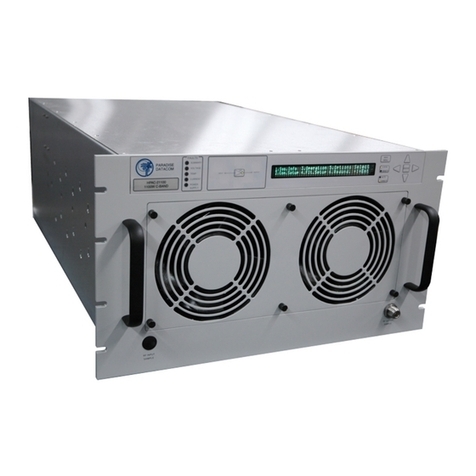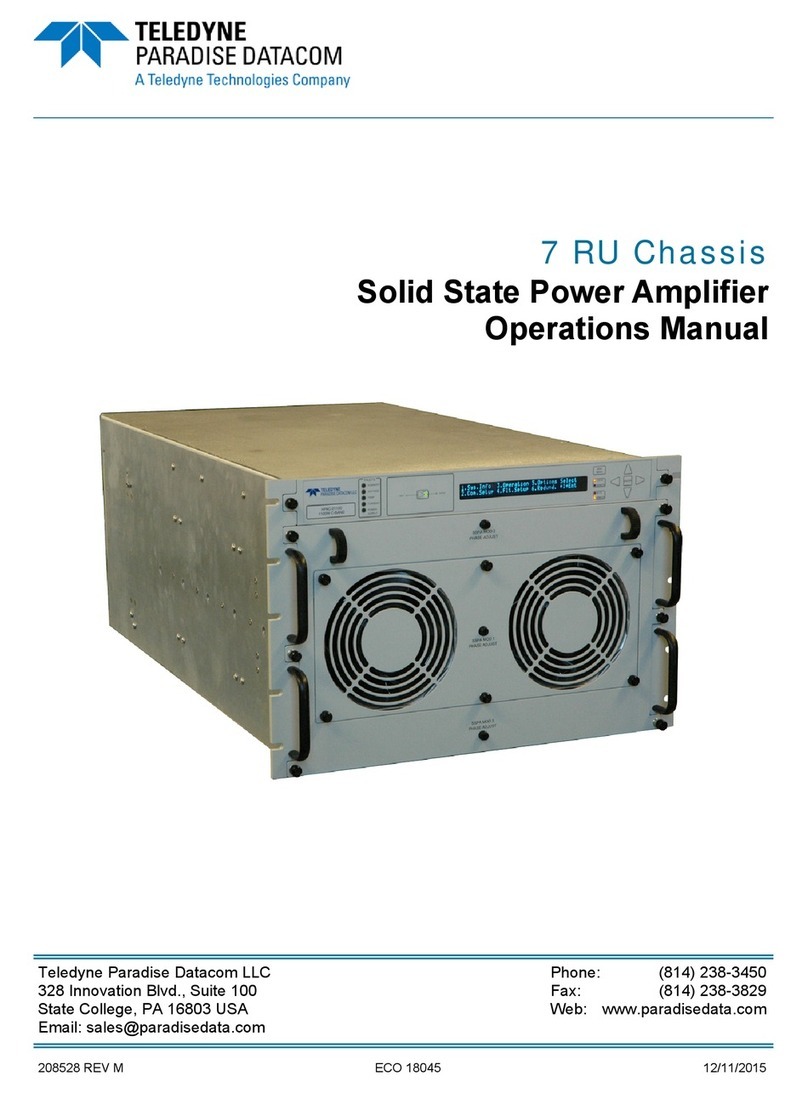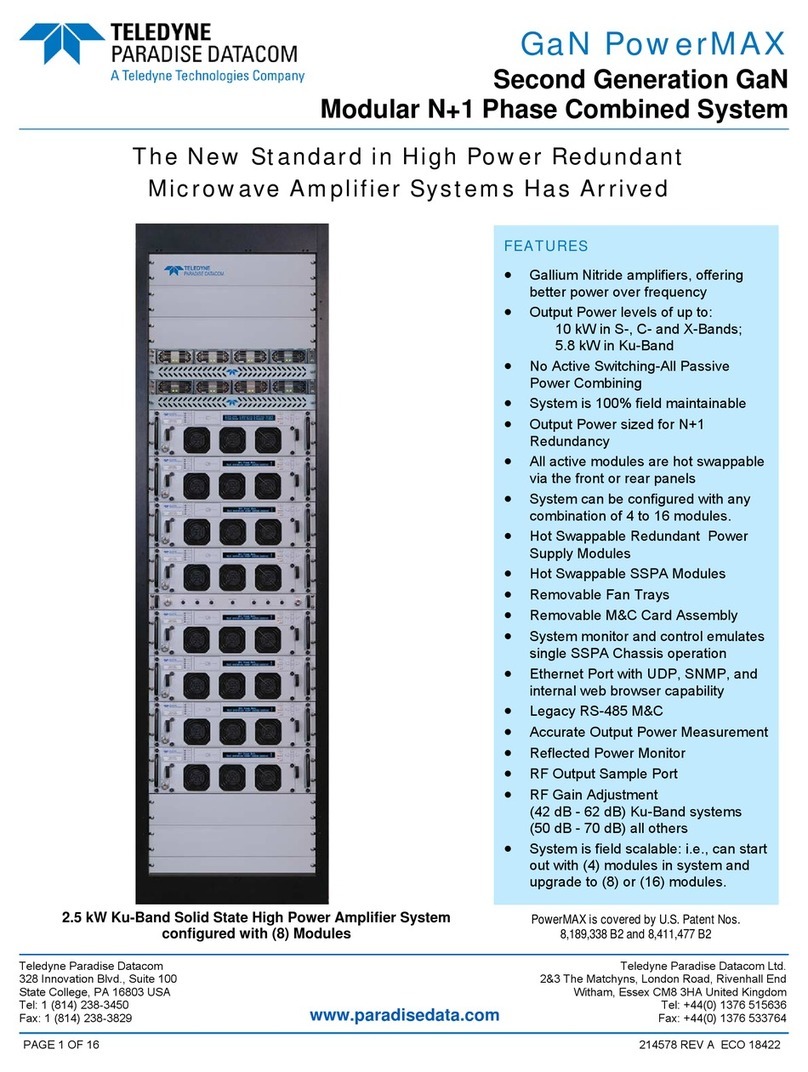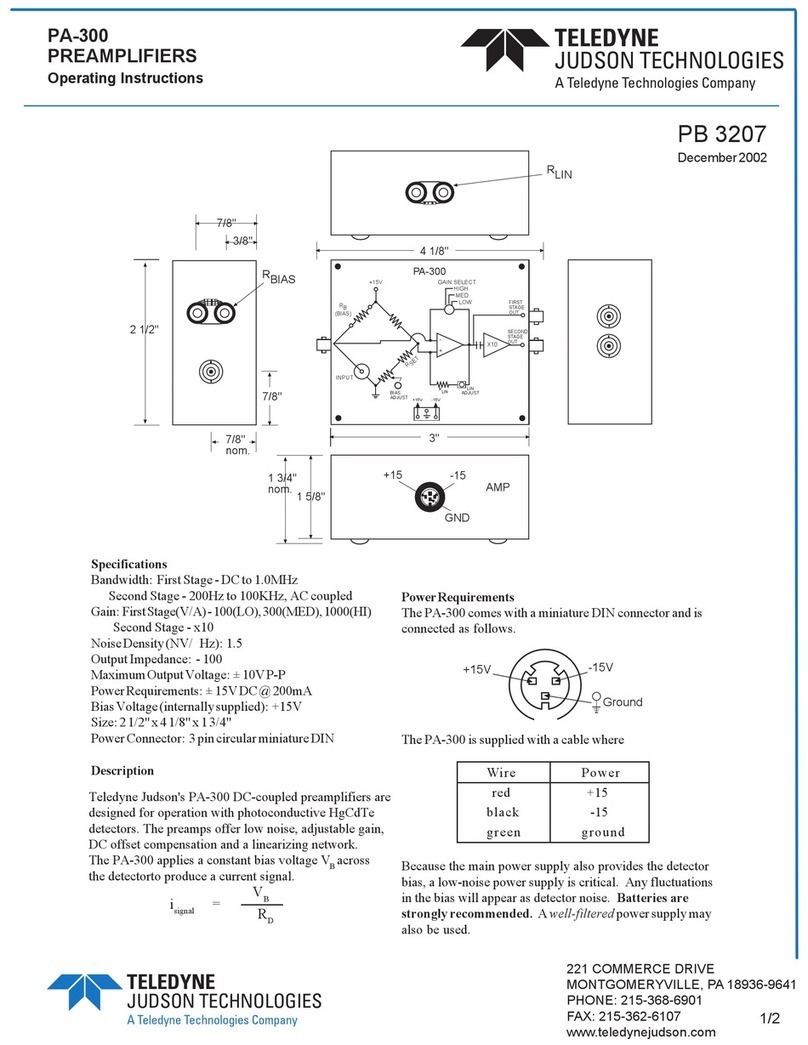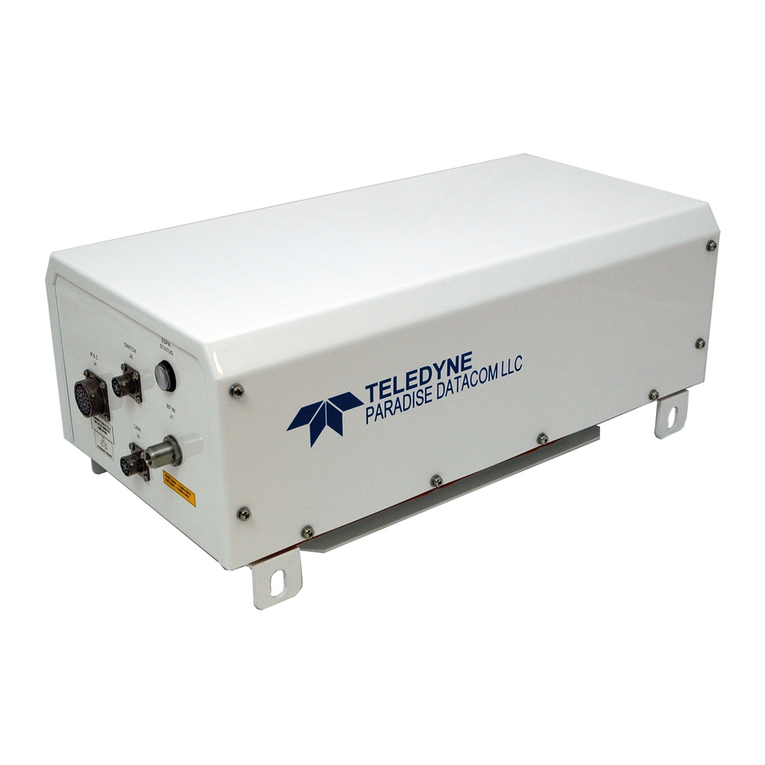
Operations Manual, 7RU SSPA Chassis 208528 REV F 7
7.6.2.3 Description of MIB entities................................................................ 99
7.6.2.4 Configuring RM SSPA unit to work with SNMP protocol................ 105
7.6.2.5 Connecting to a MIB browser ......................................................... 106
Appendix A: Ethernet Interface Quick Set-Up .......................................................................... 109
Appendix B: Proper 10/100 Base-T Ethernet Cable Wiring ..................................................... 113
Appendix C: Documentation ...................................................................................................... 117
Figures
Figure 2-1: Front Panel, 7RU SSPA Chassis ...................................................................... 13
Figure 2-2: Removable Display Face Plate ......................................................................... 14
Figure 2-3: Removable Fan Tray ......................................................................................... 15
Figure 2-4: Unplug connector .............................................................................................. 15
Figure 2-5: Slide SSPA Module from Chassis enclosure..................................................... 16
Figure 2-6: Rear Panel, 7RU SSPA Chassis ....................................................................... 17
Figure 2-7: Loosen the two retaining thumbscrews ............................................................. 21
Figure 2-8: Remove the card to access the programming connectors ................................ 21
Figure 2-9: 1RU Power Supply AC Line Inputs/Outputs ...................................................... 22
Figure 2-10: DC Output Cable, Quick-Connect to Rear of Amplifier.................................... 23
Figure 2-11: 1RU Power Supply Module Insertion/Extraction.............................................. 24
Figure 2-12: Dual 1RU Power Supply Option ...................................................................... 25
Figure 2-13: Terminal block ................................................................................................. 25
Figure 2-14: Forward Power Detector Module..................................................................... 26
Figure 3-1: Main Menu, Top Level....................................................................................... 27
Figure 3-2: System Information Sub-Menu .......................................................................... 28
Figure 3-3: Slave Unit Display ............................................................................................. 33
Figure 3-4: Communication Setup Sub-Menu...................................................................... 34
Figure 3-5: Operation Setup Sub-Menu............................................................................... 36
Figure 3-6: Fault Monitoring Setup Sub-Menu..................................................................... 37
Figure 3-7: Options Sub-Menu............................................................................................. 39
Figure 3-8: Redundancy Sub-Menu..................................................................................... 40
Figure 3-9: N+1 Info menu................................................................................................... 42
Figure 3-10: Front Panel Display, Master Unit (Online indicator illuminated) ...................... 43
Figure 3-11: Front Panel Display, Slave Unit (Online indicator dark) .................................. 43
Figure 4-1: Front panel Fault display ................................................................................... 47
Figure 4-2: Loosen thumbscrews......................................................................................... 49
Figure 4-3: Slide out M&C card............................................................................................ 49
Figure 4-4: Command prompt console window showing successful upgrade ..................... 51
Figure 4-5: Example of dust blocking heatsink fins.............................................................. 52
Figure 4-6: Remove front panel fan tray .............................................................................. 53
Figure 4-7: Unplug fan power cords (one for each fan) ....................................................... 53
Figure 4-8: Front Panel Display of System RF Power ......................................................... 54
Figure 4-9: Gain Reduction due to Failed SSPA Modules................................................... 56
Figure 5-1: Configurator, Compact Outdoor SSPA, BUC Options....................................... 57
Figure 5-2: Schematic, Optional Block Up Converter .......................................................... 58
Figure 5-3: Block Diagram of Block Up Converter / SSPA System ..................................... 58
Figure 5-4: SSPB Chassis with Evolution Series Modem................................................... 61
Figure 6-1: Select Rackmount SSPA................................................................................... 63
Figure 6-2: Add Rackmount SSPA dialog window............................................................... 63
Figure 6-3: Select ‘N+1 PowerMAX System’ ....................................................................... 64
Figure 6-4: Add PowerMAX System dialog window............................................................. 64
Figure 6-5: Status Screen.................................................................................................... 65
Figure 6-6: Settings Screen ................................................................................................. 66
Figure 6-7: Faults Screen .................................................................................................... 67
